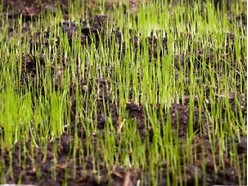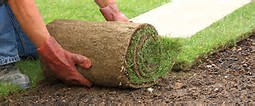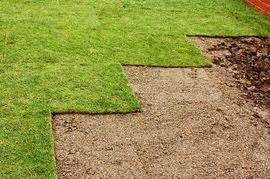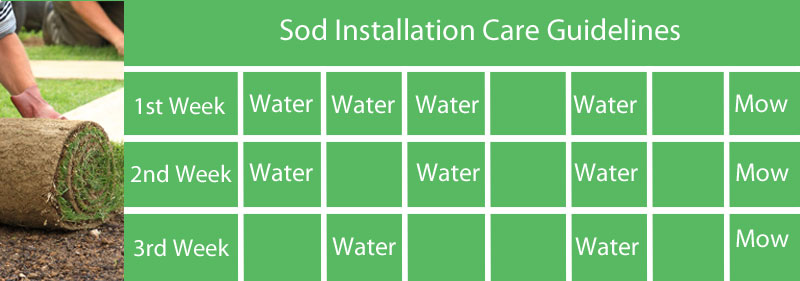|
So you have a project ....
The first decision in creating a lawn is to choose how to achieve it – to seed or sod. Seeding has a benefit in that as a home owner, you are able to create a seed blend that to match your soil conditions. It is also relatively inexpensive. However, much time is needed to wait for seed germination and for plants to fill in. Sodding on the other hand provides an instant carpet of green. You could go from bare soil to lush green lawn in just hours. It is a healthy and mature lawn when installed. Sod is grown under expert conditions using top quality seed blends. Sod also after being installed requires little maintenance – just water, mow, and fertilize as needed and it will remain healthy. Sod can be installed practically anywhere. Sod is quite useful to stop soil erosion and water pollution where rain would wash away both seed and soil. |
Once you have decided that sod is the way to go:
Prepare the Soil
Prepare the Soil
- Remove all debris from the area
- Grade and shape area to desired contours
- Add topsoil (if required) to make the area to be sodded 8-10cm deep
- Rototill the soil to a depth of 8-10cm. First in one direction and then crosswise.
- Rake the surface smooth and even to remove rough areas and depressions.
Measure & Order
- With a tape measure, measure the area prepared.
- Eg. An area of 120ft x 120ft = an area 14400sq ft.
- Bolton Sod rolls are 9 sq. ft.,
- Divide the area by 9. This is the number of rolls required to sod the area.
- Eg. 14400 sq. ft. / 9 = 1600 rolls
- Order your sod to be delivered. Please give as much time as possible to ensure you receive your order when needed.
- Remember that prompt installation within 24 hours of delivery is crucial to a strong beginning for your lawn. Sod is best kept in a shady area until ready to be used.
|
Install
|
|
Water and Mow
Give your new lawn at least 2 to 3 cm. (1 in.) of water within 1/2 hour of installation. Water daily, or more often, keeping turf moist until it is firmly rooted (about 2 weeks). Then less frequent and deeper watering should begin. Weather conditions will dictate the amount and frequency of watering. Be certain that your new lawn has enough moisture to survive hot, dry, or windy periods. Water areas near buildings more often where reflected heat dries the turf. It is important however, to begin reducing the frequency of watering to encourage deep, healthy rooting. Caution: During the first three weeks, avoid heavy or concentrated use of your new lawn. This gives the roots an opportunity to firmly knit with the soil, and ensures that the turf will remain smooth. |
Most newly sodded lawns need mowing after 6 or seven days. Take special care on slopes, make sure the mower wheels do not disturb the new sod and keep the mower blades sharp.




